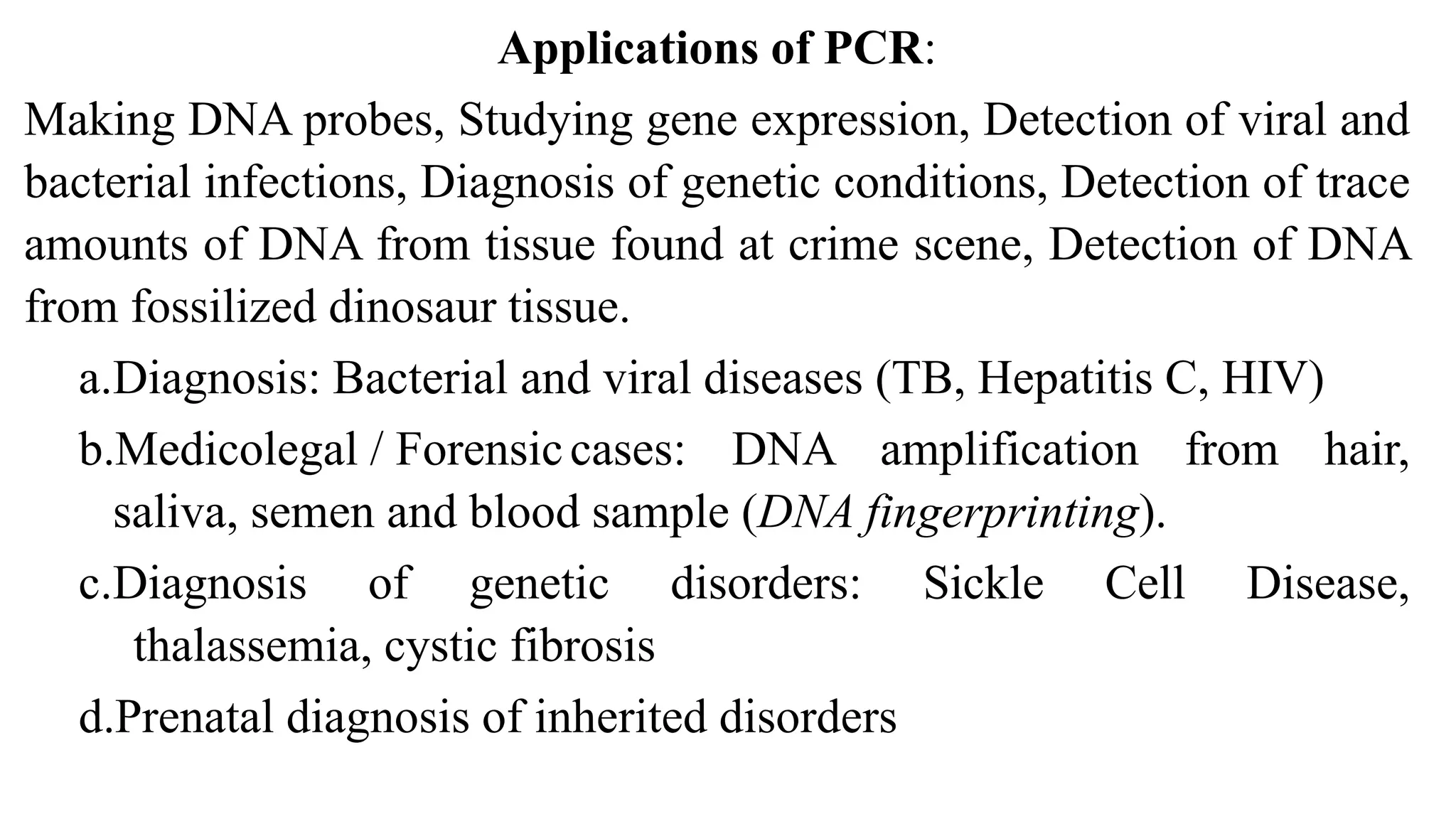Polymerase chain reaction (PCR) is a method to rapidly amplify a specific DNA sample, allowing scientists to study very small amounts of DNA. PCR uses the enzyme DNA polymerase to assemble copies of DNA by denaturing and separating the DNA strands, annealing primers to the strands, and extending the primers to make new copies of DNA. This cycling process can produce millions of copies of DNA. PCR is used in applications like disease diagnosis, forensics, genetic testing, and evolutionary studies.
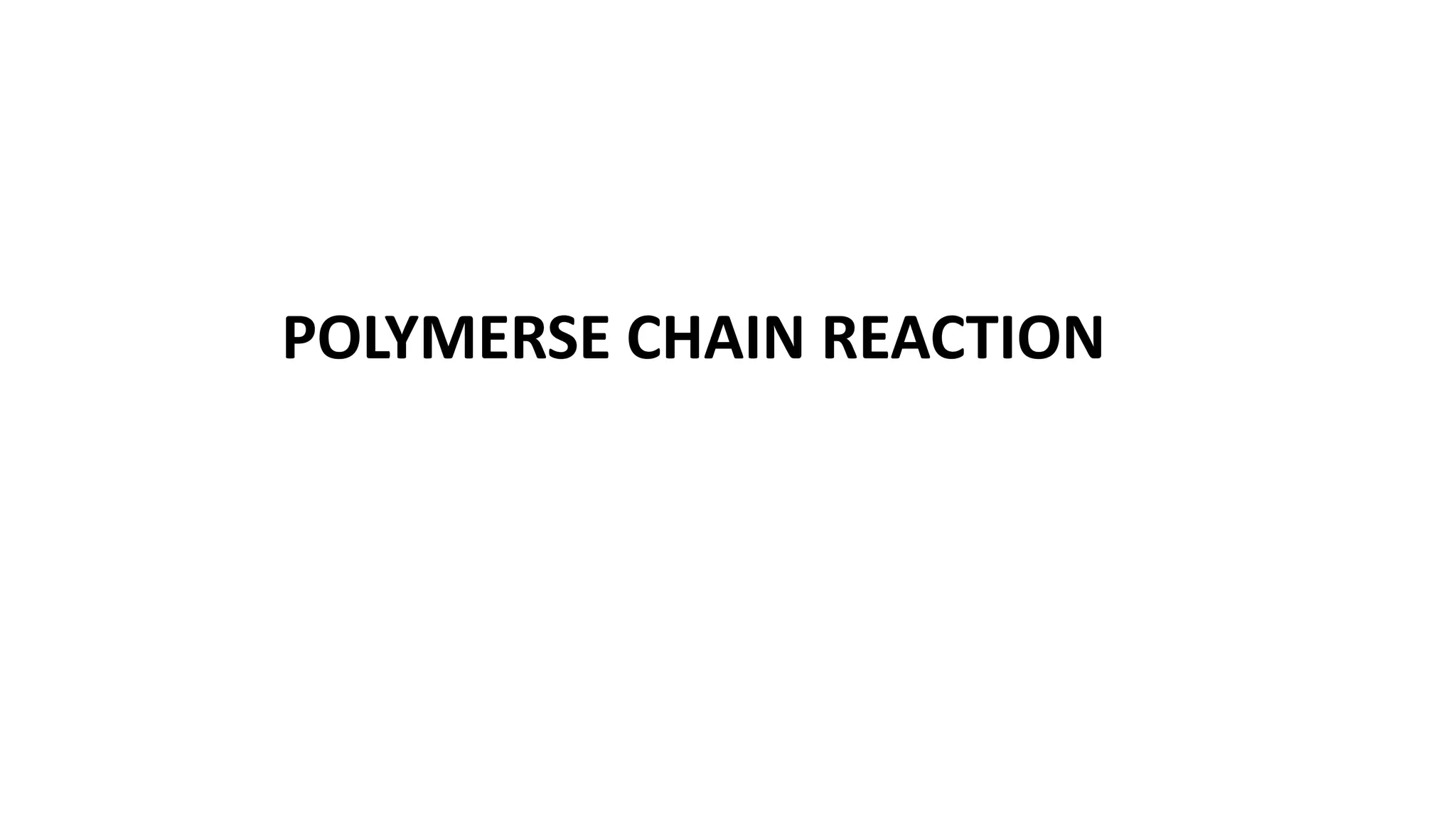
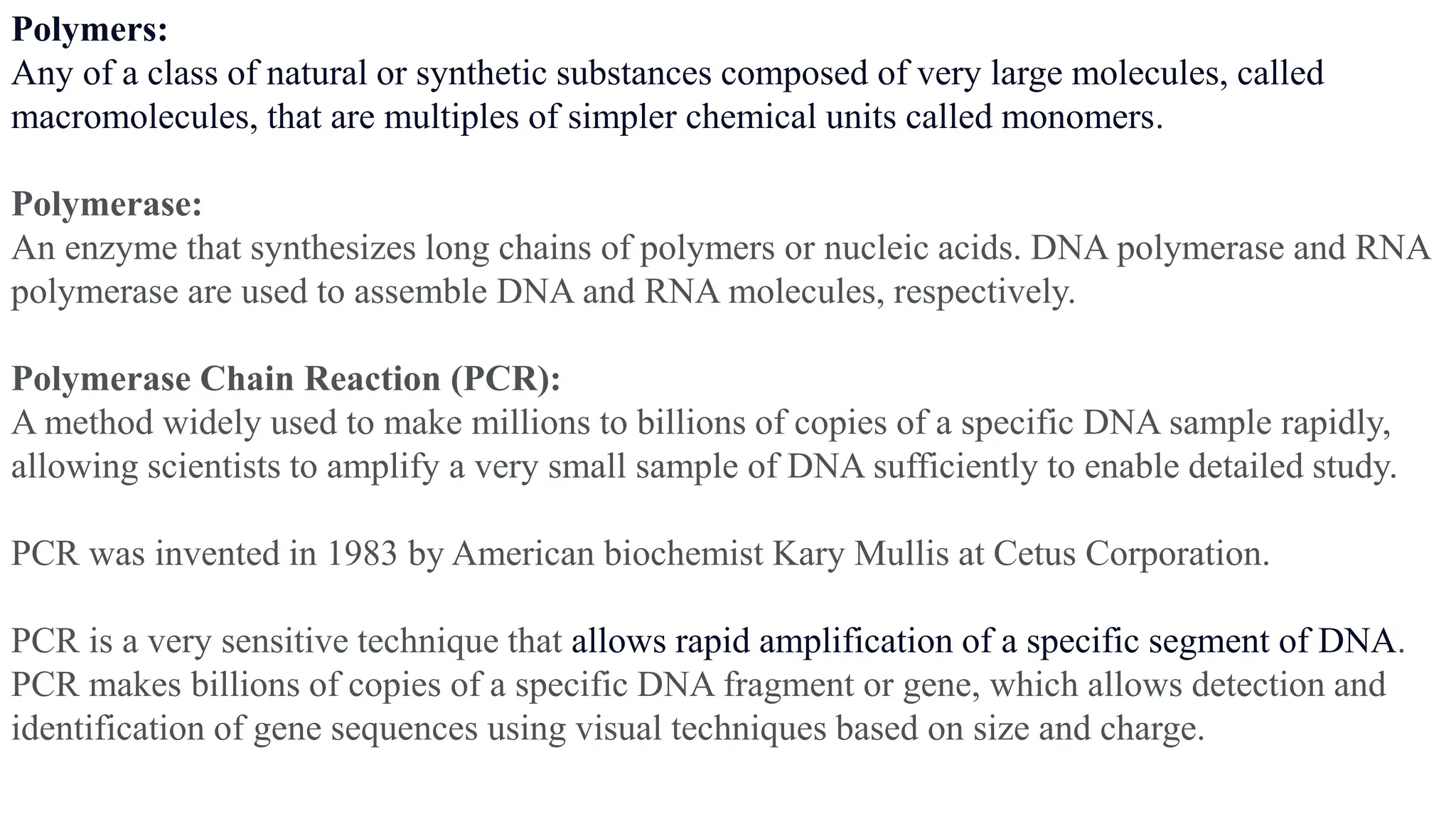

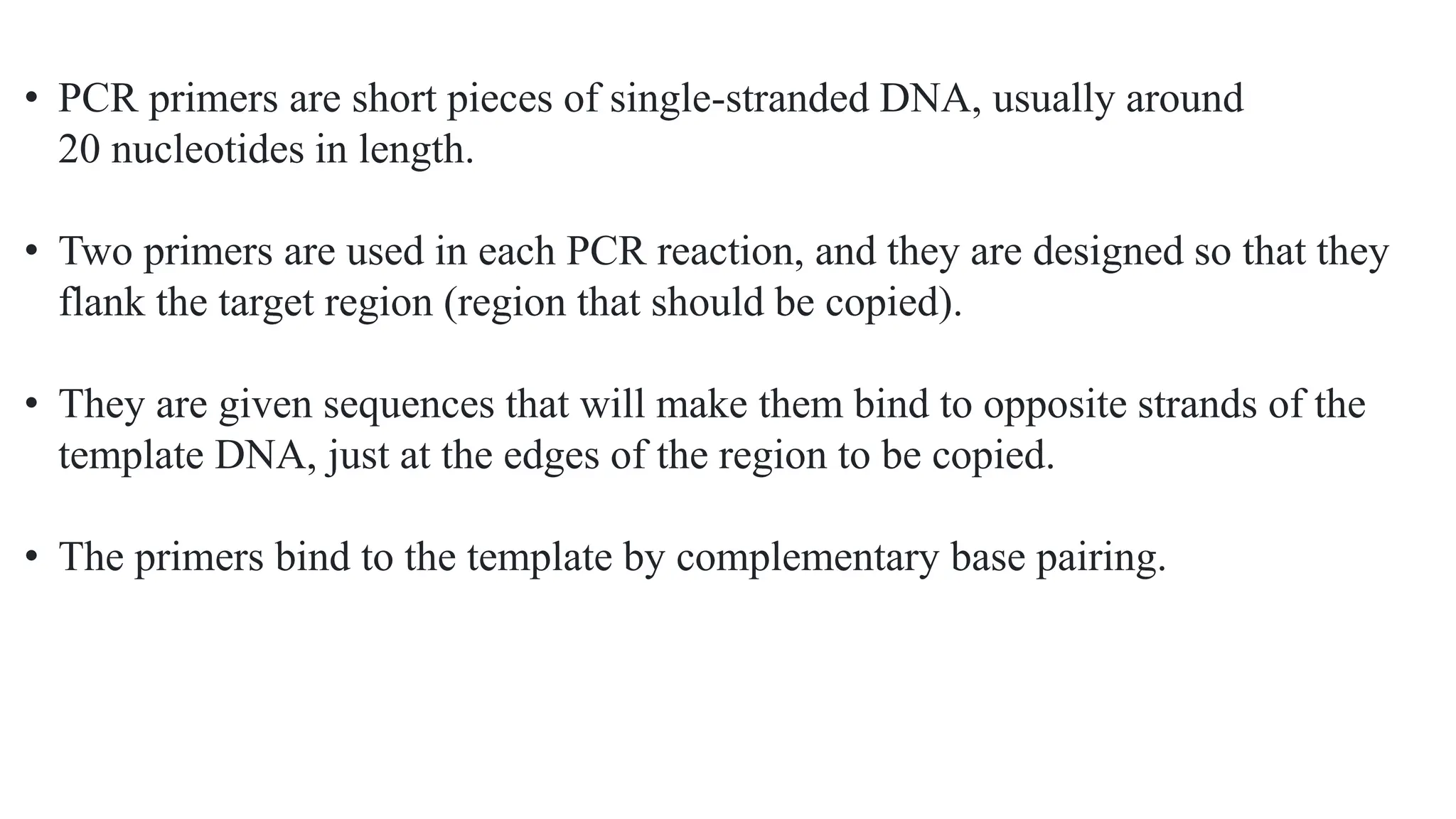
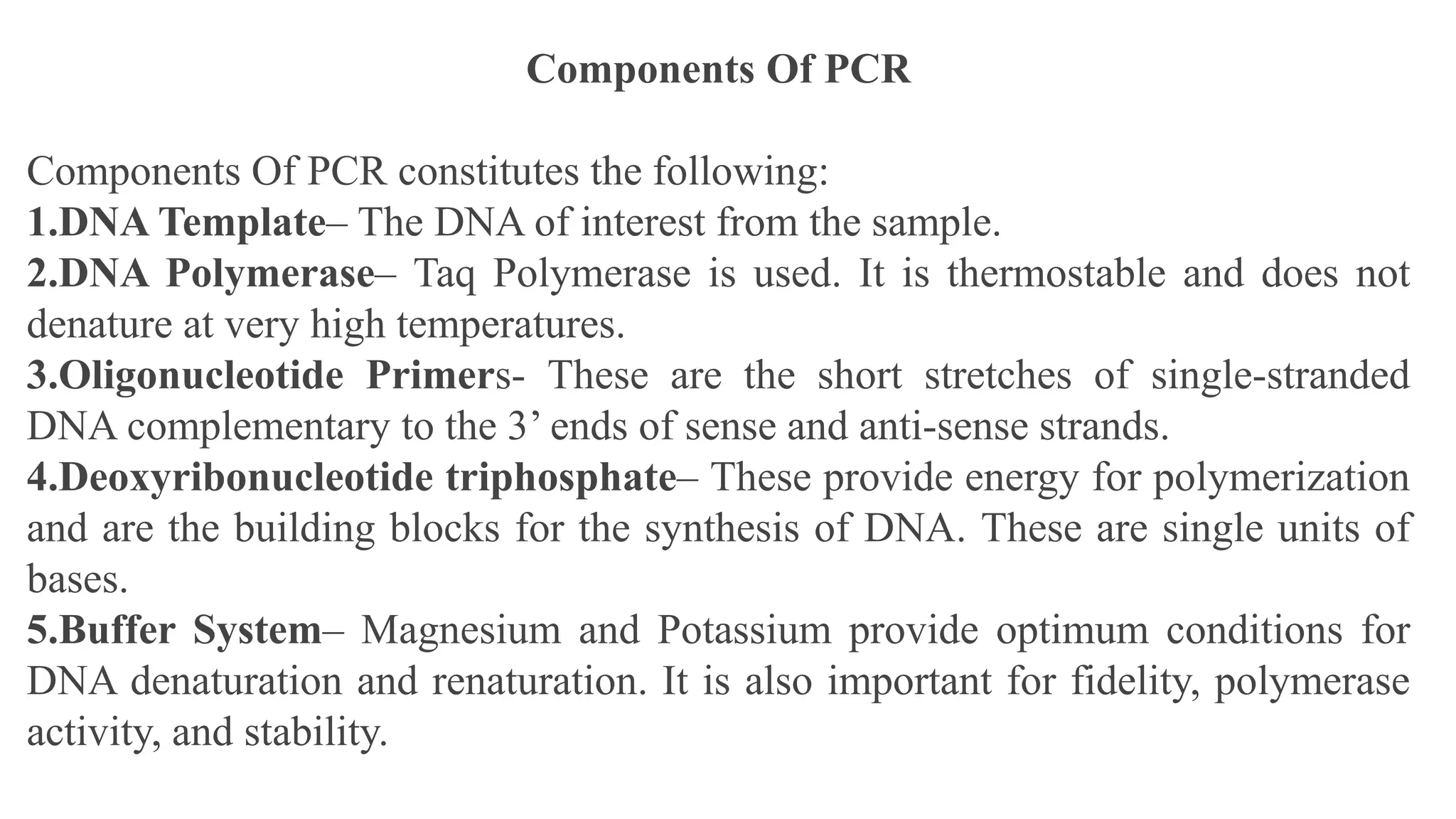
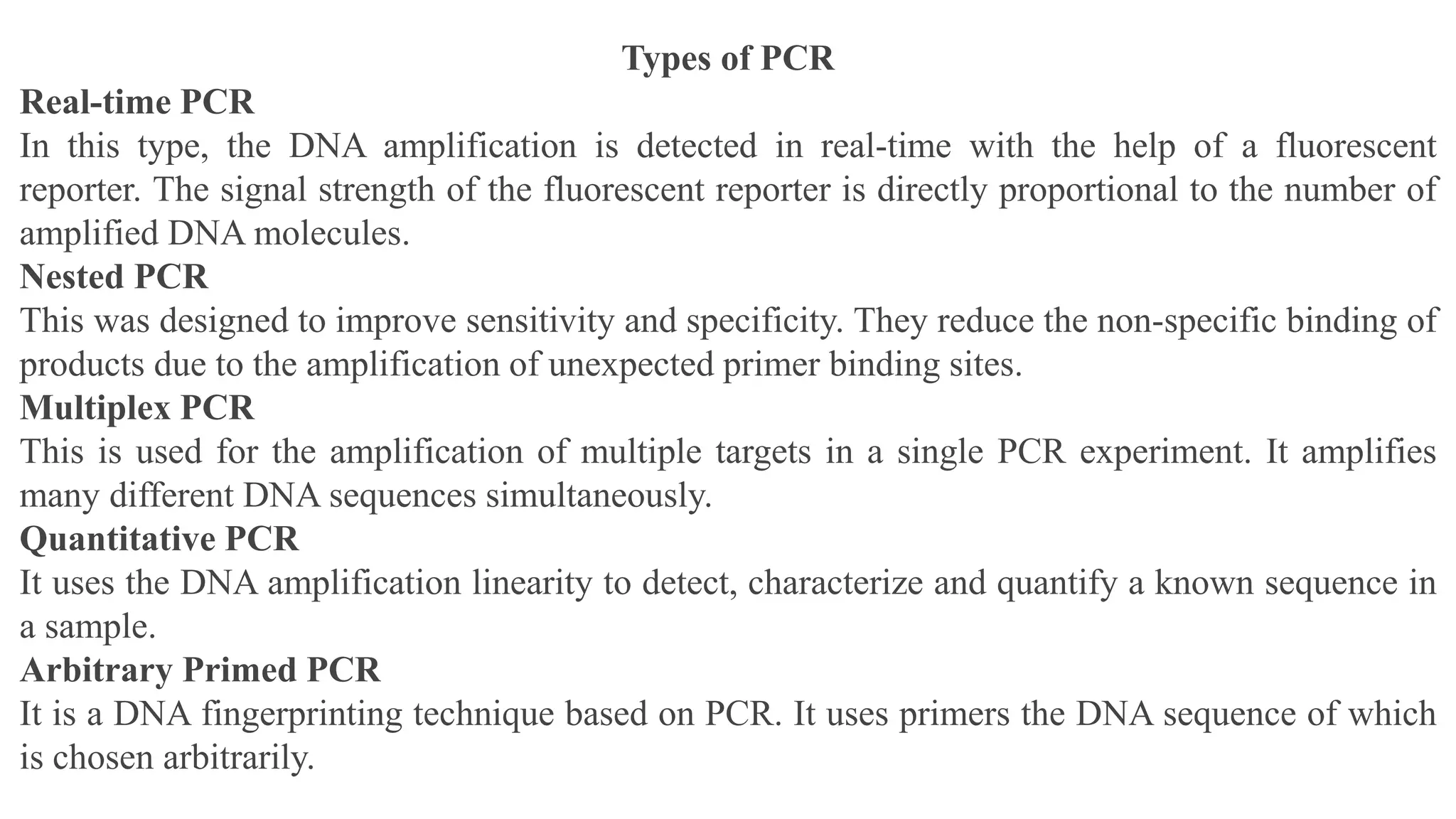
![1.Denaturation [96 °C]: Heat the reaction strongly to separate, or denature, the
DNA strands. This provides single-stranded template for the next step.
2.Annealing [55 - 65°C]: Cool the reaction so the primers can bind to their
complementary sequences on the single-stranded template DNA.
3. Extension (72 °C): Raise the reaction temperatures so Taq polymerase extends
the primers, synthesizing new strands of DNA.
This cycle repeats 25-35 times in a typical PCR reaction, which generally takes 2-
4 hours, depending on the length of the DNA region being copied. If the reaction
is efficient (works well), the target region can go from just one or a few copies to
billions.
Steps of PCR](https://image.slidesharecdn.com/polymerasechainreaction-240112082015-d181ae5d/75/Polymerase-Chain-Reaction-pptx-biotechnology-7-2048.jpg)


